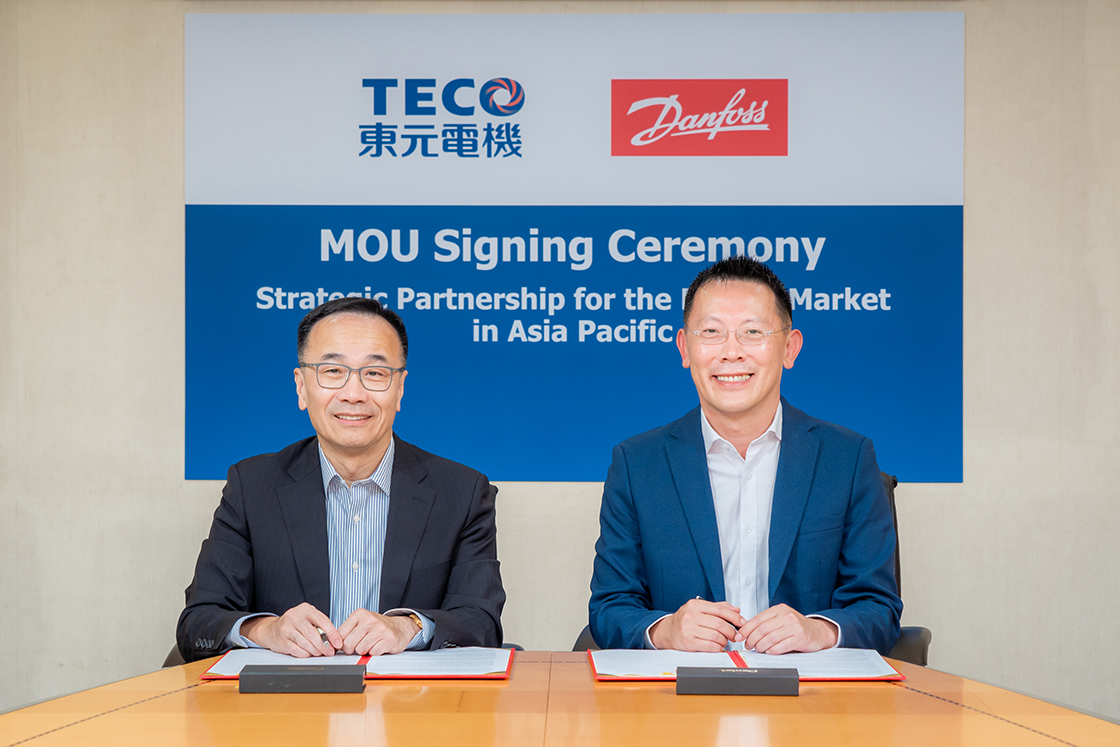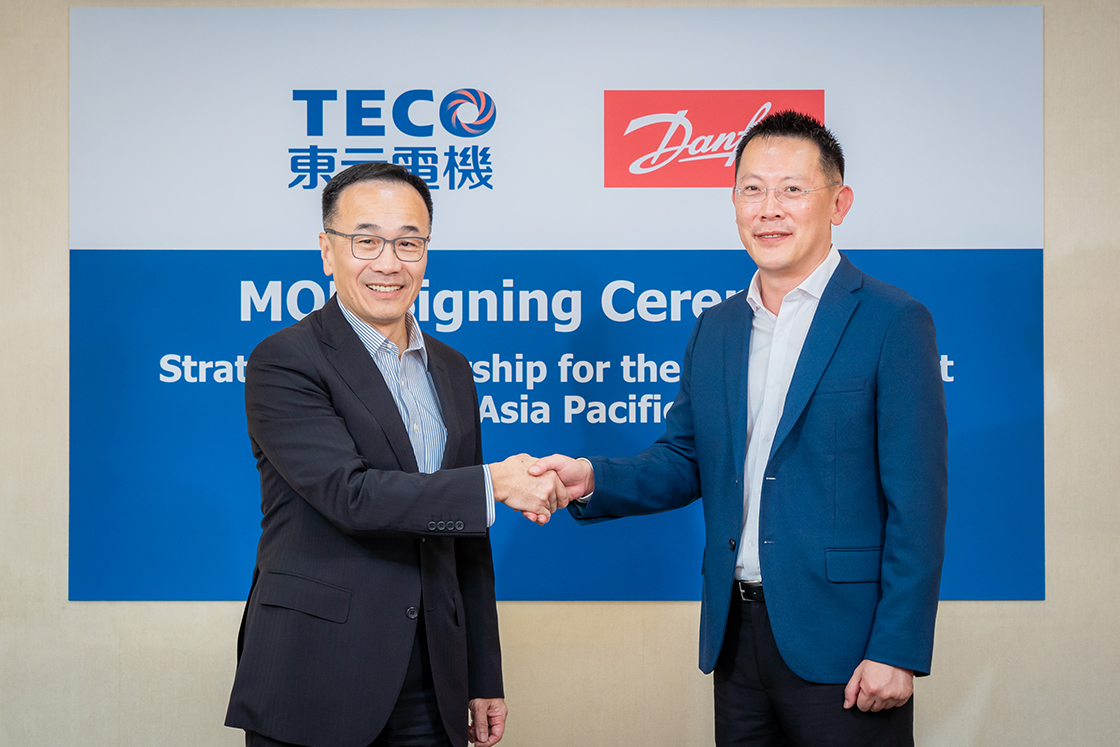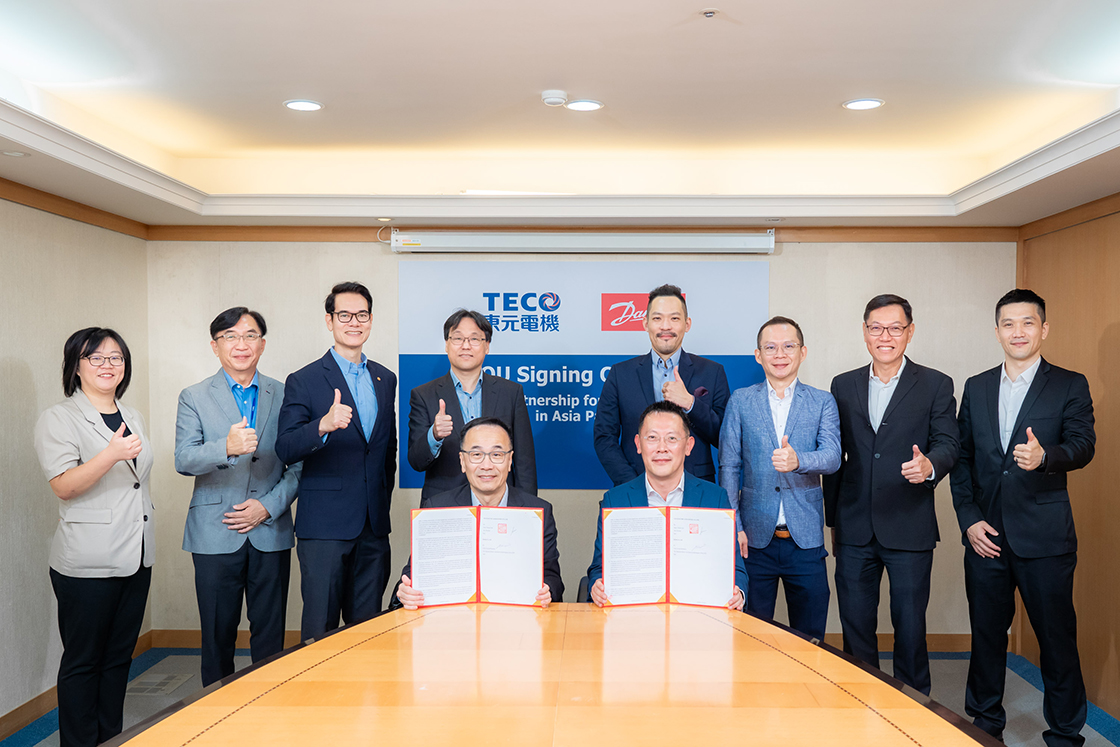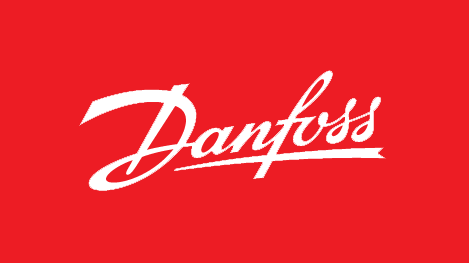Danfoss – TECO and Danfoss Sign MoU to Enhance Energy Efficiency in Asia Pacific Mining
- Mining capacity needs to expand swiftly to get on track with net zero goals, according to the IEA.
- Integrated motor-drive solutions will help reduce energy consumption and increase competitiveness
- Variable speed operation can lead to significant energy savings of approximately 15-40%
August 13, 2024, Taipei – Danfoss Asia Pacific and TECO Electric & Machinery Co., Ltd. announced the signing of a strategic Memorandum of Understanding (MoU) to deliver integrated motor-drive solutions tailored for mining operations in Australia and Indonesia.
According to the International Energy Agency (IEA), mining capacity for critical minerals needs to expand swiftly to get on track with net zero goals. Tackling the environmental and social impacts of mineral developments will be essential, including the emissions associated with mining.[i] The partnership between Danfoss Asia Pacific and TECO leverages the combined strengths and expertise of both companies to address the evolving needs of the mining industry in Australia and Indonesia.

From left to right: Thomas Fann, President of TECO; Krisada Phetsuksiri, Head of Asia Pacific & India Regions, Danfoss Drives

From left to right: Thomas Fann, President of TECO; Krisada Phetsuksiri, Head of Asia Pacific & India Regions, Danfoss Drives

Danfoss Drives and TECO aim to enhance energy efficiency in Asia Pacific mining
Australia and Indonesia play a critical role in the global supply of essential minerals, particularly those crucial for the energy transition. Recognizing the unique demands and growth opportunities within these markets, Danfoss and TECO are committed to providing optimized solutions that enhance operational efficiency and sustainability.
Under this MoU, Danfoss and TECO will collaborate to:
- Offer comprehensive motor-drive packages: Combining Danfoss’ leading-edge drive technology with TECO’s robust and reliable motors to deliver a seamless and high-performing solution.
- Expand market presence: Leverage the combined strengths and established networks of both companies to effectively target and capture new opportunities in the Australian and Indonesian mining sectors.
- Conduct joint marketing and business development: Implement coordinated initiatives to promote the combined solutions and engage with key stakeholders across the mining value chain.
- Provide enhanced customer support: Deliver comprehensive technical expertise and after-sales service to ensure optimal performance and customer satisfaction.
“This partnership exemplifies our commitment to providing customers with complete solutions that optimize their operations, reduce energy consumption, and increase competitiveness. By combining our expertise with TECO’s, we are confident in our ability to deliver exceptional value and drive sustainable growth in the mining industry,” says Krisada Phetsuksiri, Head of Asia Pacific & India Regions, Danfoss Drives.
President of TECO, Thomas Fann, says:” In response to the increasing demand for key mineral resources driven by the global energy transition, the strategic combination of TECO’s motors and Danfoss’ inverters will provide mining customers with high-efficiency and energy-saving power solutions. Specifically targeting key countries rich in lithium, copper, and nickel, such as Australia and Indonesia, TECO and Danfoss Taiwan will actively collaborate to develop green opportunities.”
This strategic partnership between Danfoss Asia Pacific and TECO marks a significant step towards providing the Australian and Indonesian mining industry with cutting-edge technologies and comprehensive support, enabling them to enhance productivity, reduce environmental impact, and achieve sustainable growth.
[i]https://iea.blob.core.windows.net/assets/ffd2a83b-8c30-4e9d-980a-52b6d9a86fdc/TheRoleofCriticalMineralsinCleanEnergyTransitions.pdf
SourceDanfoss
EMR Analysis
More information on Danfoss: See the full profile on EMR Executive Services
More information on Kim Fausing (President and Chief Executive Officer, Danfoss): See the full profile on EMR Executive Services
More information on Danfoss Power Electronics and Drives: See the full profile on EMR Executive Services
More information on Mika Kulju (Member of the Group Executive Team, President Danfoss Power Electronics and Drives, Danfoss + Chairman of the Board, Semikron Danfoss, Danfoss): See the full profile on EMR Executive Services
More information on Krisada Phetsuksiri (Head of Asia Pacific & India Regions, Danfoss Drives, Danfoss): See the full profile on EMR Executive Services
More information on TECO Electric & Machinery Co., Ltd: https://www.teco.com.tw/ + Founded in 1956 for motor production, TECO Electric & Machinery Co., Ltd. has evolved to a major business group, spanning heavy electric equipment, home appliances, information technology, communications, key electronic components and parts, infrastructural engineering, financial investment, dining, and services, with its business scope covering over 100 cities in more than 40 countries in the five major continents. In the future, in addition to continuing profound cultivation of its core businesses, TECO will develop in the direction of businesses with high added value, such as smart products and systematic solutions and dedicate to the expansion of hi-tech businesses, with the objective of “energy conservation, emissions reduction, Intelligence, and automation,” in order to build up a macro-perspective and high-quality world-class brand.
More information on Thomas Fann (President, TECO Electric & Machinery Co., Ltd): https://www.teco.com.tw/en/about/tecoteam + https://www.linkedin.com/in/thomas-shin-fann-88315097/
More information on Net Zero by 2050 by the United Nations: https://www.un.org/en/climatechange/net-zero-coalition + Put simply, net zero means cutting greenhouse gas emissions to as close to zero as possible, with any remaining emissions re-absorbed from the atmosphere, by oceans and forests for instance.
Currently, the Earth is already about 1.1°C warmer than it was in the late 1800s, and emissions continue to rise. To keep global warming to no more than 1.5°C – as called for in the Paris Agreement – emissions need to be reduced by 45% by 2030 and reach net zero by 2050.
More than 140 countries, including the biggest polluters – China, the United States, India and the European Union – have set a net-zero target, covering about 88% of global emissions. More than 9,000 companies, over 1000 cities, more than 1000 educational institutions, and over 600 financial institutions have joined the Race to Zero, pledging to take rigorous, immediate action to halve global emissions by 2030.
More information on Net Zero by 2050 by the Science Based Targets initiative (SBTi): https://sciencebasedtargets.org/net-zero + The SBTi’s Corporate Net-Zero Standard is the world’s only framework for corporate net-zero target setting in line with climate science. It includes the guidance, criteria, and recommendations companies need to set science-based net-zero targets consistent with limiting global temperature rise to 1.5°C.
UN vs. SBTi:
- UN targets nations, while SBTi focuses on companies. UN sets a broad goal, while SBTI provides a detailed framework for target setting.
- Both aim to achieve net zero emissions and limit warming to 1.5°C. The UN sets the overall direction, and SBTi helps businesses translate that goal into actionable plans.
Key components of the Corporate Net-Zero Standard:
- Near-term targets: Rapid, deep cuts to direct and indirect value-chain emissions must be the overarching priority for companies. Companies must set near-term science-based targets to roughly halve emission before 2030. This is the most effective, scientifically-sound way of limiting global temperature rise to 1.5°C.
- Long-term targets: Companies must set long-term science-based targets. Companies must cut all possible – usually more than 90% – of emissions before 2050.
- Neutralize residual emissions: After a company has achieved its long-term target and cut emissions by more than 90%, it must use permanent carbon removal and storage to counterbalance the final 10% or more of residual emissions that cannot be eliminated. A company is only considered to have reached net-zero when it has achieved its long-term science-based target and neutralized any residual emissions.
- Beyond Value Chain Mitigation (BVCM): Businesses should invest now in actions to reduce and remove emissions outside of their value chains in addition to near- and long-term science-based targets.
More information on IEA (International Energy Agency): https://www.iea.org + The IEA is at the heart of global dialogue on energy, providing authoritative analysis, data, policy recommendations, and real-world solutions to help countries provide secure and sustainable energy for all.
The IEA was created in 1974 to help co-ordinate a collective response to major disruptions in the supply of oil. While oil security this remains a key aspect of our work, the IEA has evolved and expanded significantly since its foundation.
Taking an all-fuels, all-technology approach, the IEA recommends policies that enhance the reliability, affordability and sustainability of energy. It examines the full spectrum issues including renewables, oil, gas and coal supply and demand, energy efficiency, clean energy technologies, electricity systems and markets, access to energy, demand-side management, and much more.
Since 2015, the IEA has opened its doors to major emerging countries to expand its global impact, and deepen cooperation in energy security, data and statistics, energy policy analysis, energy efficiency, and the growing use of clean energy technologies.
More information on Dr. Fatih Birol (Executive Director, International Energy Agency): https://www.iea.org/contributors/dr-fatih-birol + https://www.linkedin.com/in/fatih-birol/
EMR Additional Notes:
- MoU (Memorandum of Understanding):
- A memorandum of understanding is a type of agreement between two or more parties. It expresses a convergence of will between the parties, indicating an intended common line of action.
- Starting point of negotiations between multiple parties to signal the intent of doing business or coming to an agreement. It simplifies a legal contract by establishing the key objectives and goals.
- A MOU is not a legally binding document. It is a statement of serious intent – agreed voluntarily by equal partners – of the commitment, resources, and other considerations that each of the parties will bring. It has moral force, but does not create legal obligations.
- Motors, Generators and Drives:
- A motor is the mechanical or electrical device that generates the rotational or linear force used to power a machine.
- An electric motor converts electricity into mechanical energy, providing a power source for machinery.
- A generator does the opposite of this, converting mechanical energy into electricity.
- A servo motor is a self-contained electrical device, that rotate parts of a machine with high efficiency and with great precision. The output shaft of this motor can be moved to a particular angle, position and velocity that a regular motor does not have. It consists of a suitable motor coupled to a sensor for position feedback. It also requires a relatively sophisticated controller.
- A drive (also often referred to as an electric controller) is the electronic device that harnesses and controls the electrical energy sent to the motor.
- By positioning a drive between the electrical supply and the motor, power is fed into the drive, and the drive then controls and regulates the power that is fed into the motor. This allows control of speed, direction, acceleration, deceleration, torque and, in some applications, position of the motor shaft.
- Variable Speed Drive (VSD) – Variable Frequency Drive (VFD) / Frequency Converter – Inverter:
- A variable speed drive is a device used in electromechanical drives to control the speed and torque of an AC motor by adjusting the motor’s input frequency and voltage. Variable speed drives may be either electric, hydraulic, mechanical or even electronic.
- A Variable Frequency Drive (VFD) is a type of motor controller that drives an electric motor by varying the frequency and voltage supplied to the electric motor. Frequency (or hertz) is directly related to the motor’s speed (RPMs). In other words, the faster the frequency, the faster the RPMs go.
- Other names for a VFD are variable speed drive, adjustable speed drive, adjustable frequency drive, AC drive, microdrive, and inverter.
- The voltage is normally the same before and after frequency conversion. Frequency converters are normally used for speed regulation of motors used to drive pumps and fans.
- An Inverter is a device that converts direct current electricity to alternating current either for stand-alone systems or to supply power to an electricity grid.
- An inverter is one of the most important pieces of equipment in a solar energy system. It’s a device that converts direct current (DC) electricity, which is what a solar panel generates, to alternating current (AC) electricity, which the electrical grid uses.
- Most inverters are installed and used in conjunction with a battery bank of some sort – a common set up in off-grid solar installations.
- => A variable frequency drive (VFD) refers to AC drives only and a variable speed drive (VSD) refers to either AC Drives or DC Drives. VFDs vary the speed of an AC motor by varying the frequency to the motor. VSDs referring to DC motors vary the speed by varying the voltage to the motor.


